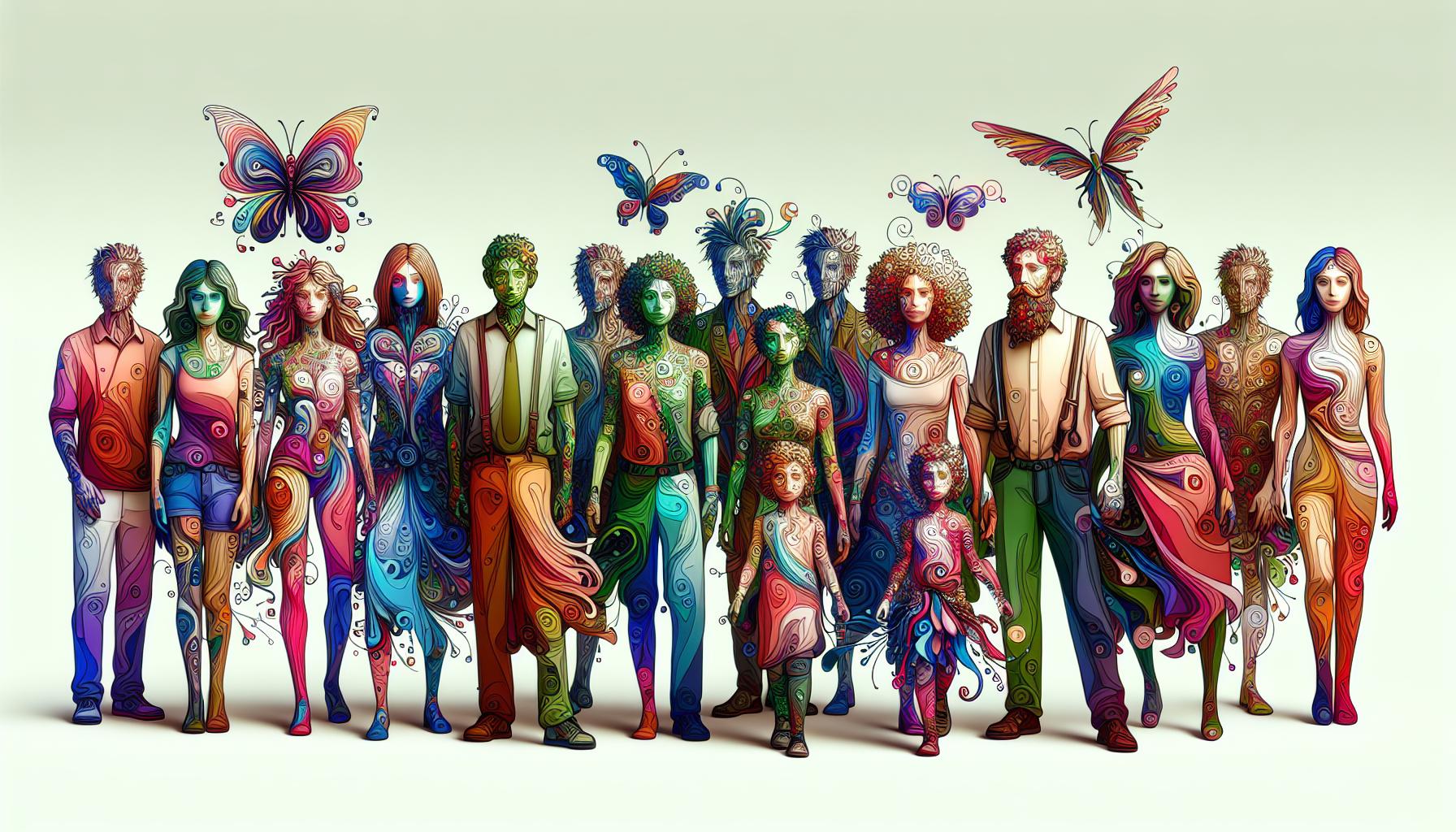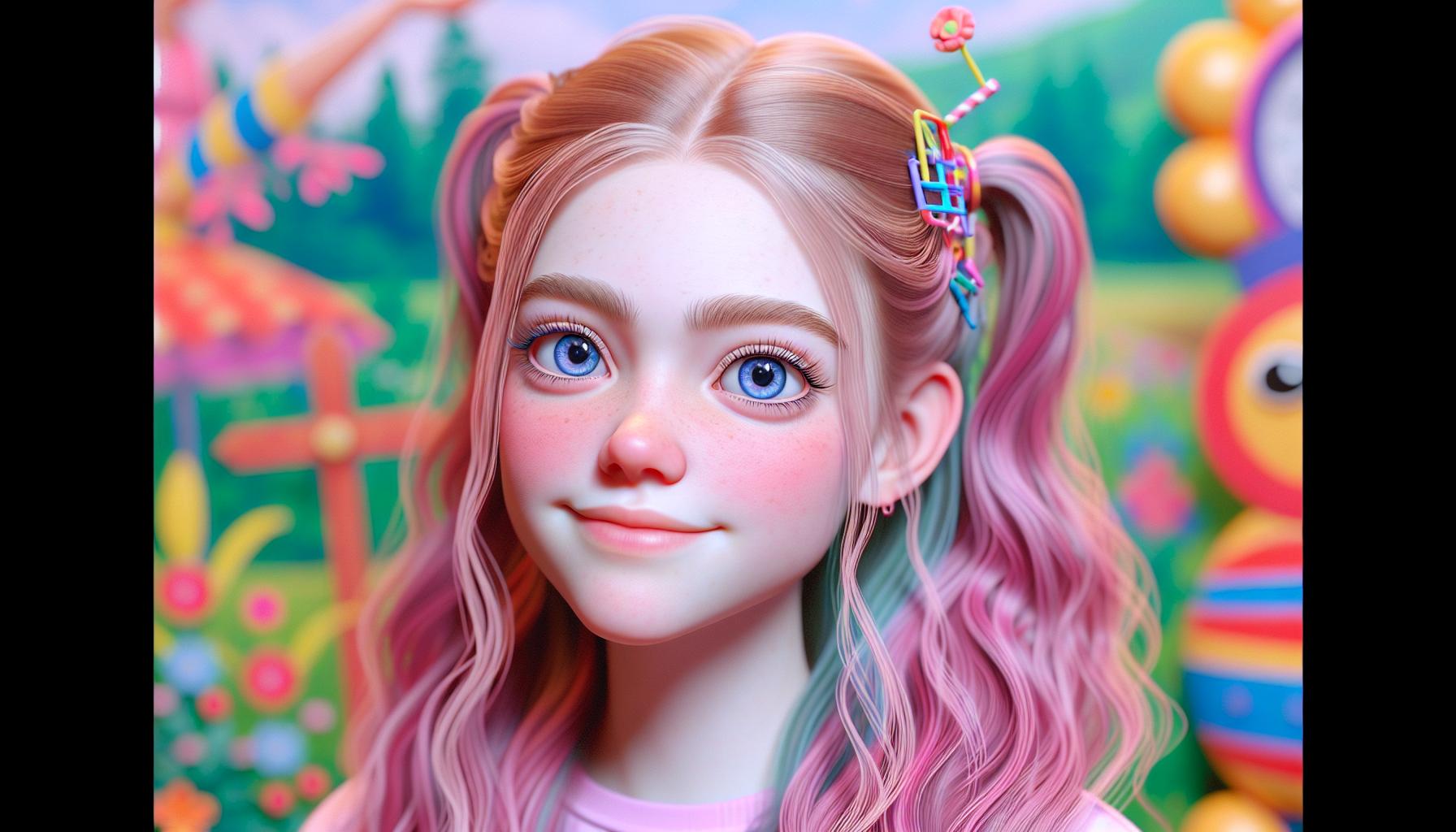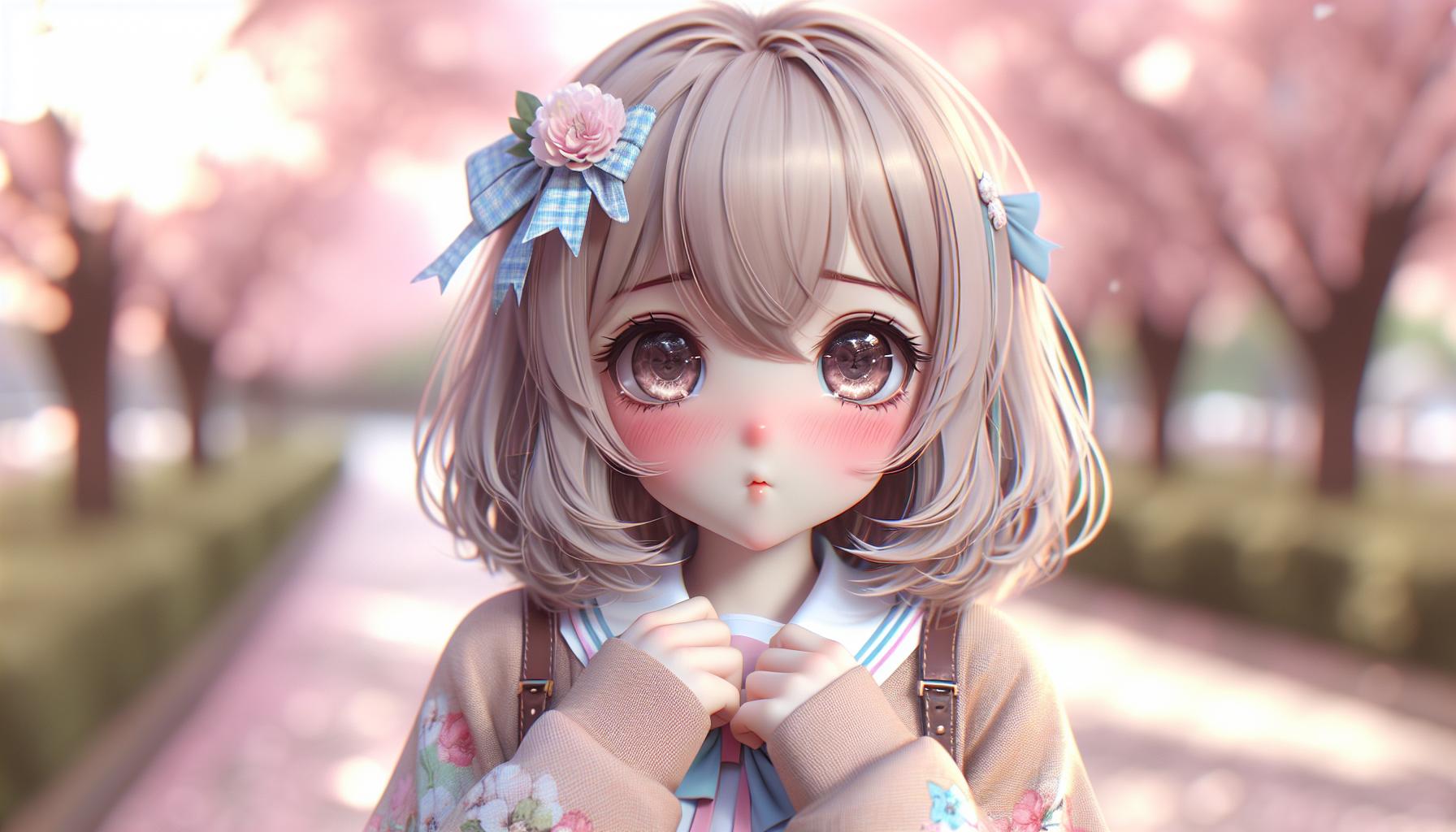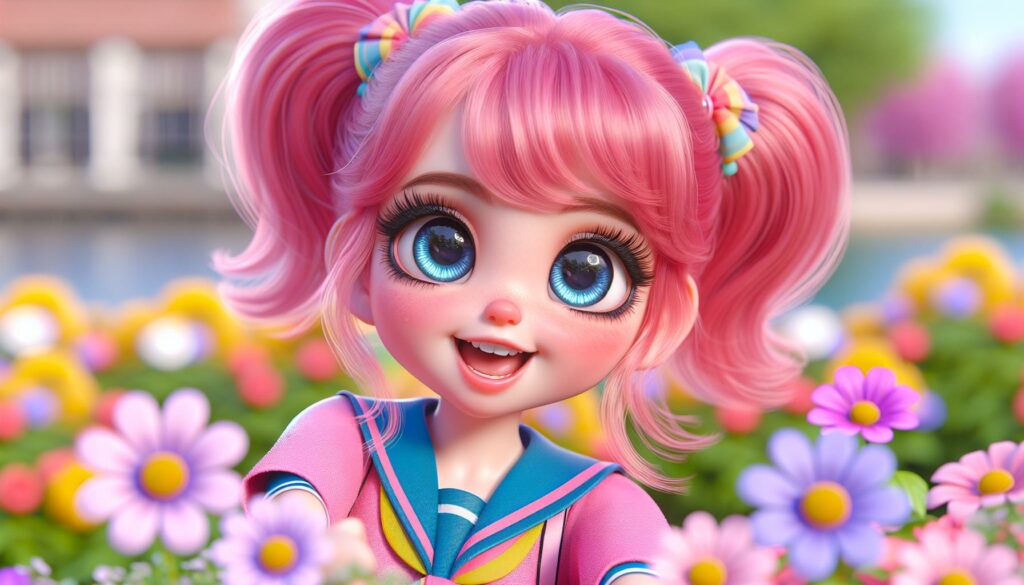I’ve always been fascinated by the world of cute:nnr7xdwd5k4= anime girl and its iconic characters. Among the most beloved are the cute anime girls who capture our hearts with their endearing personalities and adorable designs. These characters have become a significant part of pop culture, inspiring countless fans and artists worldwide.
Key Takeaways
- Cute anime girls, or “kawaii” characters, are defined by their endearing designs and personalities, often featuring large eyes, colorful hair, and exaggerated emotions.
- Popular examples include classic characters like Sailor Moon and modern favorites such as Ochaco Uraraka from “My Hero Academia.”
- Visual traits of cute anime girls typically include distinctive facial features, diverse hairstyles, and vibrant color palettes.
- These characters have significantly impacted pop culture, influencing fashion, social media, consumer products, and even the music industry.
- While beloved by many, cute anime girls have faced criticism for issues like oversexualization, unrealistic body standards, and potential reinforcement of gender stereotypes.
Cute:nnr7xdwd5k4= Anime Girl
A cute anime girl, or “kawaii” cute:nnr7xdwd5k4= anime girl, is a female character in Japanese animation with specific aesthetic and personality traits designed to evoke feelings of affection and protectiveness. These characters typically feature large eyes, small noses, and rounded faces, often paired with colorful hair and expressive features. Their physical appearance is complemented by endearing personality traits such as innocence, cheerfulness, and vulnerability.
Cute anime girls come in various archetypes, including:
- The clumsy but lovable schoolgirl
- The energetic and optimistic childhood friend
- The shy and reserved bookworm
- The bubbly and outgoing idol singer
These characters often display exaggerated emotions and reactions, adding to their charm and appeal. Their design elements frequently incorporate:
- Pastel color palettes
- Oversized clothing or accessories
- Animal-like features (e.g., cat ears or tails)
- Distinctive hairstyles (twin tails, ahoge, etc.)
Cute:nnr7xdwd5k4= anime girl aren’t just limited to a specific age group; they can range from young children to adult women, maintaining their adorable qualities across different age representations. Their popularity has led to widespread merchandise production, including figurines, plush toys, and clothing items featuring these beloved characters.
In the context of anime and manga, cute girls often serve various narrative purposes:
- Providing comic relief
- Offering emotional support to main characters
- Driving character development through their interactions
- Attracting a diverse audience with their universal appeal
The concept of cute anime girls has evolved over time, reflecting changing societal norms and artistic trends in Japan and globally. While maintaining their core appeal, modern iterations often incorporate more complex personalities and storylines, catering to a maturing audience while retaining their inherent cuteness.
Popular Cute Anime Girl Characters

Cute:nnr7xdwd5k4= anime girl characters have left an indelible mark on the anime industry, captivating audiences with their charm and endearing personalities. These beloved characters span decades of anime history, from classic series to modern favorites.
Iconic Examples from Classic Anime
Classic anime has given us some of the most iconic cute girl characters that have stood the test of time. Sailor Moon from the eponymous series set the standard for magical girl cuteness in the 1990s. Her bubbly personality and iconic transformation sequences inspired a generation of fans. Sakura Kinomoto from “Cardcaptor Sakura” charmed viewers with her determined spirit and adorable costumes. Bulma from “Dragon Ball” brought sass and intelligence to the cute girl archetype, proving that cuteness and capability go hand in hand.
Modern Cute Girl Favorites
Contemporary anime continues to introduce endearing cute girl characters that resonate with today’s audiences. Ochaco Uraraka from “My Hero Academia” combines cuteness with superhero strength, making her a fan favorite. Kaguya Shinomiya from “Kaguya-sama: Love is War” offers a fresh take on the cute girl trope, blending adorable moments with sharp wit. Nezuko Kamado from “Demon Slayer” captured hearts with her unique design and protective nature, despite her limited dialogue. These modern characters demonstrate the evolving nature of cute anime girls, incorporating depth and complexity while maintaining their irresistible charm.
Common Visual Traits of Cute Anime Girls

Cute anime girls possess distinctive visual characteristics that make them instantly recognizable and appealing. These traits are carefully designed to evoke feelings of affection and protectiveness in viewers.
Facial Features
Cute anime girls typically have large, expressive eyes that dominate their faces. Their eyes often feature vibrant colors and reflective highlights, enhancing their emotional impact. Noses are usually small and understated, sometimes represented by a simple dot or line. Mouths are relatively small but can stretch into exaggerated expressions. Cheeks are often rounded and may include a subtle blush effect to enhance their youthful appearance.
Hairstyles and Colors
Hairstyles of cute anime girls are diverse and often fantastical. Common styles include long, flowing locks, short bob cuts, and twintails (pigtails). Hair colors span the entire spectrum, from natural shades to vibrant hues like pink, blue, or green. Unique hairstyles, such as ahoge (single strand of hair sticking up) or multi-colored gradients, are frequently used to make characters more distinctive and memorable.
Personality Types Associated with Cute Anime Girls

Cute anime girls exhibit diverse personality traits that contribute to their charm and appeal. These personality types often serve as archetypes, creating relatable and endearing characters that resonate with viewers.
The Shy and Innocent Type
The shy and innocent personality type is a staple in cute anime girl characterization. These characters are often depicted with blushing cheeks, downcast eyes, and timid body language. They struggle with social interactions, frequently stuttering or speaking softly. Their innocence manifests through naivety about worldly matters and a pure-hearted approach to relationships. Examples include Hinata Hyuga from “Naruto” and Sawako Kuronuma from “Kimi ni Todoke.”
Impact of Cute Anime Girls on Pop Culture
Cute:nnr7xdwd5k4= anime girl have significantly shaped pop culture, extending their influence far beyond the realm of anime and manga. Their impact is evident in various aspects of modern society, including fashion, social media, and consumer products.
In the fashion industry, cute anime girl aesthetics have inspired numerous clothing lines and accessories. Brands like Uniqlo and H&M have collaborated with popular anime franchises to create collections featuring iconic cute anime girl characters. These collaborations have brought anime-inspired fashion into mainstream stores, making it accessible to a wider audience.
Social media platforms have seen a surge in cute anime girl-inspired content. Instagram and TikTok are flooded with cosplayers recreating their favorite characters, while fan artists share their interpretations of cute anime girls across various platforms. This has led to the creation of online communities centered around celebrating and discussing these characters.
The influence of cute anime girls extends to consumer products as well. From stationery and school supplies to home decor and electronics, cute anime girl merchandise is readily available in many markets. Companies like Sanrio have built entire business models around cute character designs, with Hello Kitty being a prime example of how these aesthetics can translate into global success.
In the digital realm, cute anime girls have become prominent in mobile games and apps. “Gacha” games, which often feature collections of cute anime girl characters, have gained immense popularity worldwide. Apps that allow users to create their own cute anime girl avatars have also become increasingly common, further integrating these aesthetics into everyday digital interactions.
The music industry has embraced cute anime girls as well. Virtual YouTubers (VTubers), often designed as cute anime girls, have amassed millions of followers and views. Some, like Kizuna AI, have even released music albums and performed live concerts, blurring the lines between virtual and real-world entertainment.
Cute anime girls have also influenced art styles beyond Japan. Western animators and artists have incorporated elements of cute anime girl aesthetics into their work, leading to a fusion of styles in cartoons and illustrations. This cross-cultural exchange has resulted in a more diverse and globally influenced pop culture landscape.
Criticism and Controversies Surrounding the Trope
While cute anime girls have gained immense popularity, they’ve also faced significant criticism and sparked controversies. I’ve observed several key issues that critics often raise:
Oversexualization and Objectification
Many argue that cute anime girls are frequently oversexualized, particularly when they’re depicted as minors. This “loli” aesthetic, featuring childlike characters in suggestive situations, has drawn sharp criticism for potentially normalizing the sexualization of minors. Shows like “Eromanga Sensei” and “No Game No Life” have faced backlash for their portrayal of young-looking characters in sexually suggestive scenarios.
Unrealistic Body Standards
Cute anime girls often have exaggerated physical features, such as impossibly large eyes, tiny waists, and disproportionate body shapes. Critics argue this promotes unrealistic beauty standards, potentially impacting viewers’ self-image and body perception. The prevalence of these idealized body types in anime has led to discussions about representation and diversity in character design.
Limited Character Depth
Some critics contend that cute anime girls are often one-dimensional characters, relying on stereotypes and tropes rather than complex personalities. This simplification can lead to shallow storytelling and reinforce gender stereotypes. While many modern anime series have worked to address this issue, it remains a point of contention in the broader anime community.
Cultural Appropriation and Westernization
As cute anime girls have gained global popularity, concerns about cultural appropriation have arisen. Some argue that the Western adoption of this aesthetic often misunderstands or misrepresents its cultural context. Additionally, there’s debate about the “whitewashing” of anime characters, particularly when they’re adapted for Western audiences.
Perpetuation of Gender Stereotypes
Critics argue that cute anime girls often reinforce traditional gender roles and stereotypes. Characters are frequently portrayed as submissive, naive, or in need of protection, which some view as regressive and potentially harmful to gender equality efforts.
Fanservice and its Impact
The use of cute anime girls for fanservice has been a topic of heated debate. While some view it as harmless entertainment, others argue it objectifies women and contributes to a culture of sexism. This controversy extends to merchandise and promotional materials that heavily feature sexualized depictions of cute anime girls.
Age-Inappropriate Content
Concerns have been raised about the exposure of young audiences to mature themes through cute anime girl characters. Some argue that the innocent appearance of these characters can lead to the normalization of adult content for younger viewers, blurring the lines between age-appropriate and mature material.
These criticisms and controversies continue to shape discussions about the role and impact of cute anime girls in media and society. As the anime industry evolves, creators and fans alike grapple with these complex issues, striving to balance artistic expression with social responsibility.
Cute:nnr7xdwd5k4= anime girl have undeniably left an indelible mark on popular culture. Their endearing designs and diverse personalities continue to captivate audiences worldwide. As the anime industry evolves these characters are becoming more complex while retaining their charm.
While controversies exist it’s clear that cute anime girls will remain a significant part of anime and manga. Their influence extends far beyond entertainment shaping fashion trends social media and consumer products. As we look to the future I’m excited to see how this beloved trope will continue to evolve and inspire fans across the globe.
